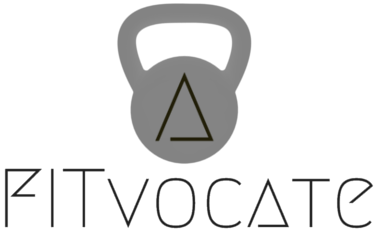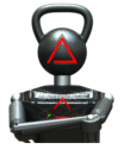
How can you tell the quality of food? It's actually pretty easy because the food companies have to (by law) tell you what’s in your food and this is done simply with:
Food Labels.
I’ll quickly go over what each of these items listed within the Nutrition Facts mean:
Serving Size
- This is the recommended portion of the food. All of the values below it are based on it. Usually there is a volumetric value next to it (gram, ounces, ml, etc.) which is very helpful. With the use of a scale, you are able to accurately measure out the proper portions.
Servings Per Container
- This is a proportional value based on the serving size and total volume of food within the package: Serving Size/Total Volume of the Food Item.
Calories
- This is a number that represents the total energy contained within the food. This number is the summation of all the calories contained within: fat, carbohydrates and protein in the food
◦ Fat: 9 Calories/1 gram
◦ Carbohydrates: 4 Calories/1 gram
◦ Protein: 4 Calories/1 gram
Calories from Fat
- This is a rather redundant value to have on the list; why have fat calories been isolated? Ingesting a certain amount of calories from fat won’t make you fat. A surplus of total calories for your day will make you store fat. If you ate a surplus in calories of only fruits and vegetables (which is hard to do, but still possible) you’d store fat. In the end, ignore this value.
% Daily Value
- This is another value you can ignore. This value is based on a 2,000 calorie diet. These percentages only apply to you if you’re following the same 2,000 calorie diet that is recommended by the government: 65g fat, 300g carbohydrates, 53.75 protein. So, unless those are your values for the day, simply ignore these percentages. We’ll discuss in another article as to how to set up your “Macros”.
Total Fat
- This value is a summation of all the grams of fat found in this food. There are 4 types of fats: Saturated, Monounsaturated, Polyunsaturated, and Trans-fat. This is a valuable number to have. Personally, I like to see mostly saturated and monounsaturated fats with little to no polyunsaturated fats. Never, ever, ever, EVER any trans-fats.
Cholesterol
- A product found only in animal products and a crucial organic molecule required to aid in testosterone production is known as Choledterol. Despite what red flags pop in your head when you hear the word “Cholesterol” this is not a poisonous substance (unlike other food items I’ll discuss in a little bit). Cholesterol composes about 30% of all the cell membranes in your body and is crucial in building/maintaining these membranes. There are two types of cholesterol: HDL and LDL. Pretty much, if you’re eating whole natural cholesterol sources (butter, eggs, meat) you’re taking in the healthy cholesterol your body needs. If you’re eating highly processed food, you’re taking in a cholesterol (LDL) that has been “esterified” for shelf stability. For you, all this means, is that it is poorly absorbed in your body...which is not a good thing at all.
Sodium
- This value represents the total weight of sodium that is contained within the serving size. Sodium is the salt content of your food. Not all sodium is created equal. Some sources of sodium come with trace minerals that are used as anti-caking (a processed food delicacy) while other sources of contain trace minerals that are crucial for life. I’ll tell you how to notice good/bad sources of sodium contained within the ingredient list.
Potassium
- This value represents the total weight of potassium that is contained within the serving size. Potassium is an essential element (just like sodium) that your body uses for all of its communication processes. The average person doesn’t get nearly enough (~4,000mg/day) potassium in a day; so, just concentrate on eating foods rich in potassium. Foods rich in potassium are: Kale, Bananas and Potatoes to name a few.
Total Carbohydrates
- This value represents the complex carbohydrates, fiber and simple carbohydrates contained with the food. Carbohydrates are crucial for brain, muscle and endocrine function: so do not avoid them.
- Complex carbohydrates are found in foods that have carbohydrates but are considered a low-glycemic index food or a low-glycemic load food. Complex carbohydrates are considered such because your body has to do work to break them down into their glucose form: glucose is what is used as energy by your body’s cells.
- Fiber is the substance that aides in digestion and keeps you feeling full between meals.
- Ingesting simple sugars is essentially eating what your body is attempting to break down: complex carbohydrates, into simple sugars which aren’t necessarily a bad thing, but it’s very easy to eat too much. Eating too much simple sugars will have detrimental results on your blood sugar levels. Your body wants to stay in a constant state of balance, and when you introduce too much sugar at one time into your blood, your body’s response is to match the sugar content with insulin. Insulin is by no means bad, but over time, consistently flooding your blood with insulin will create a desensitization, which is bad.
Simple rule of thumb is that sugar content should never exceed protein content.
Protein
- The ever famous “protein”: loved by all and over consumed by many. Protein is crucial for repairing bodily tissues, but there are two things you need to remember: Don’t eat too much and not all protein is created equal. 1 gram of protein per 1 pound body weight is a bit excessive, shoot more for 1 gram of protein per 1 pound of LEAN body weight. For most individuals you can take your weight and subtract 20% (compensate for 20% body fat).
Example: your weight is 180lbs at 20% bodyfat
- 10% of 180=18lbs
- To get 20% simply multiply what you got for 10% by 2
- 18lbs*2=36lbs
- 180lbs – 36lbs = 150lbs
- Therefore a solid protein number for you would be 150 grams of protein a day. The leaner you are, the more protein you should consume (because of higher concentration of muscle mass)
- Remember, not all protein is created equal (I’ll dive into this a little more deeper in a little bit)
Vitamins and Minerals
- This is where a lot of crucial information gets stored. You should look here as intently as you look at protein content. This region is where the quantity of micronutrients is tallied up; the higher the values are in this section, the more “nutritious” the food is.
Now that I’ve told you how I read the nutritional facts, I’ll divulge into the second crucial part, which is to understand the:
INGREDIENTS
While the nutritional facts are the numerical representation of the components within your food, the ingredients are what your food actually consists of.
Food products should have a short ingredient list (1-10 ingredients)
Food manufacturers will also try to cut corners by using cheaper, poor quality ingredients. Below we have listed what you should be avoiding.
Avoid Poor Quality Fats:
- Hydrogenated Oils
- Refined Oils
- Non-dairy Creamers (what the heck is that even?)
- Margarine
- Shortening
- Soybean Oil
- Cottonseed Oil
- Expeller Pressed Canola Oil
- High Oleic oils
Avoid Poor Quality Proteins:
- Soy Protein Isolate, Soy Protein, Isolated Soy Protein, Hydrolyzed Soy Protein Vegetable protein (For Men)
- Mechanically Separated Meats (Sounds...tasty?)
- Imitation meat
Avoid Poor Quality Carbohydrates:
- High Fructose Corn syrup
- Refined Honey
- White Sugar
- Sugar Alcohols
- White Rice Flour
- Enriched Flour
- Bleached Flour
- Soy Flour (A cheap flour source that they also use to bump their protein numbers)
- Refined Sugars
Conclusion:
The more research you do on nutrition, the more you’ll realize that there are over-laps and contradictions. Doctors will say one thing and a week later they will say to do another. Just know, that this is what I’ve been doing for many years now and I continually get stronger, more athletic everyday and my natural testosterone levels are higher than they have ever been in my entire life.
Also remember: FOOD IS LIFE
We are advocates of your goals!
-Chris
- Diet
- Getting Started
- Supplements
- Weight Loss

